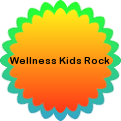
As a preschooler, my oldest son LOVED Thomas the Train. As he is our first born, we were inclined to spoiling him and he had nearly every train in the set. We loved the trains - we loved the fact that they were wooden. They had that reassuring feel of old-fashioned toys. We loved watching him use his imagination, making up his own story lines - he could have played for hours straight, if we let him. His brother, who was a toddler at the time, loved the trains, too. He especially loved to explore them with his mouth. We didn't think much of it.
Then there was the recall. Suddenly it was announced that certain Thomas trains were painted with lead-based paint! Suddenly we had to take away my son’s favorite playthings and mail them off. Suddenly we had to worry about whether our kids had toxic lead levels in their little bodies. Our blissful naiveté was taken from us. How could we know that the remaining trains were okay (in fact – they were not – it was revealed later that more of the trains contained lead, as well). How could we know that other painted toys were safe? In the meantime, our son asked us for months, when he could have his treasured trains back.
The trains were just the beginning. Since then, reports have come out about dangerous BPA in baby bottles and baby formula tainted with melamine. It has gotten to the point where I’m appalled, but no longer shocked.
The scary thing is, our children’s developing bodies are at much higher risk of suffering the negative effects of these poisons than adults. Studies by the Environmental Protection Agency show infants up to age two to be, on average, ten times more vulnerable and, in some cases, up to 65 times more vulnerable to carcinogenic chemicals than adults. Autism, ADHD, asthma, learning disabilities, cancer, fertility problems and birth defects are increasingly associated with the toxins we are exposed to.
According to the Environmental Working Group (EWG), hundreds of chemicals are now found in the bodies of Americans, including babies in the womb. Laboratory tests by the Environmental Working Group (EWG) have found an average of 200 industrial chemicals in the umbilical cord blood of 10 babies – many of the chemicals linked to serious and potentially irreversible health problems.
So, what can we, as citizens, as consumers – as parents – do? Well, of course we can start by educating ourselves on the known dangers that are out there and steer clear of them. Of course, many of the dangerous toxins haven’t been outed by studies yet. So the best we can do to protect ourselves is to try to steer clear of plastics, opting in favor of natural materials such as glass, metal and wood; buy organic goods, and use products that are as close to their natural form as possible.
On the larger front, we can proactively encourage lawmakers to enact legislation that will protect us and our children from being poisoned. The Kid-Safe Chemicals Act was first introduced to Congress in 2005 and was reintroduced this year.
The Kid-Safe Chemical Act would overhaul our nation's chemical regulatory law by:
* requiring that industrial chemicals be safe for infants, kids and other vulnerable groups;
* requiring that new chemicals be safety tested before they are sold;
* requiring chemical manufacturers to test and prove that the 62,000 chemicals already on the market that have never been tested are safe in order for them to remain in commerce;
* requiring EPA to review "priority" chemicals, those which are found in people, on an expedited schedule;
* requiring regular biomonitoring to determine what chemicals are in people and in what amounts;
* requiring regular updates of health and safety data and provides EPA with clear authority to request additional information and tests;
* providing incentives for manufacturers to further reduce health hazards;
* requiring EPA to promote safer alternatives and alternatives to animal testing;
* protecting state and local rights; and
* requiring that this information be publicly available.
Through the Kid-Safe Chemicals Act we can give our children a safer and healthier future. Write letters to your State Senators and Representatives to let them know that this matters to you, that you want our children to stop being poisoned and that we need this legislation enacted.
With support from you, me and others who care about the health of the children and all the people of our nation, we can make a big step in protecting ourselves (and our environment) and future generations from the dangerous toxins that poison us today.





